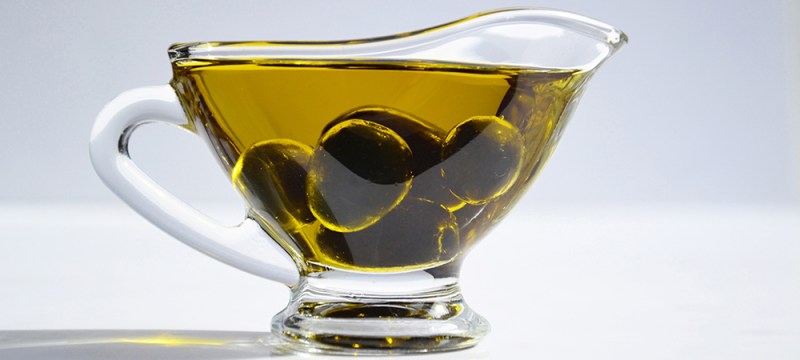The varieties of olive oil are where distinction gets tricky, as they are not determined by the different types of olives used to make the oil, but by the process in which the oil is extracted and produced, the level of free oleic acid in the oil, and any additives. The less free oleic acid in the olive oil, the higher quality it is.
Any olive oil that has been refined, which means it has been treated to remove defects, will have a higher quantity of free oleic acid. Likewise, unrefined olive oil remains pure, never being treated and maintaining a lesser free oleic acid content. Refined olive oil has a less bitter flavor than the unrefined variety.
So what is the difference between regular olive oil and extra virgin olive oil?
Extra Virgin Olive Oil

Extra virgin olive oil is unrefined, which means it has not been treated with any chemicals nor altered by temperature. Apart from that, to receive the title of extra virgin, it goes through rigorous production standards that leave it with a stronger, richer olive taste, a higher content of antioxidants, and the lowest level of oleic acid in any olive oil that never exceeds one percent. Extra virgin olive oil also has a ton of health benefits. The antioxidants in extra virgin olive oil can act as anti-inflammatory agents and also lower the risk of developing Alzheimer’s disease.
The olive oil also contains a large number of fatty acids that lower the rate of cardiovascular disease, risk of stroke, cholesterol and blood pressure. Extra virgin olive oil contains monounsaturated and polyunsaturated fats, also known as “heart-healthy fats,” which are essential fats to a proper diet.
Extra virgin olive oil also burns at a lower temperature than the rest of the oils, meaning it heats up the quickest. It also typically has a darker green color than lesser quality olive oils, although color alone isn’t an effective measure to tell if an olive oil is extra virgin or not.
Virgin olive oil is similar to extra virgin olive oil in that it is also unrefined, but the standards of production are slightly less rigorous, which leaves it slightly less flavorful and makes it slightly less beneficial to your health.
Because of extra virgin olive oil’s stronger flavor and higher price, it’s commonly used for dipping bread, as a salad dressing or in marinades.
Regular Olive Oil

Sometimes referred to as “pure” olive oil on labels, regular olive oil is a mix between refined olive oil and virgin olive oil. Usually, the ratio is around 85 percent refined olive oil to 15 percent virgin olive oil. This style of oil has a lighter color than extra virgin varieties. Because of the refining process, it goes through, including heat and the use of chemicals, this style of olive oil doesn’t preserve as many antioxidants. It does, however, still hold all the healthy monounsaturated and polyunsaturated fats as extra virgin olive oil, so it still maintains the heart-healthy benefits.
Regular olive oil has a higher smoking point — this, combined with its milder flavor, make it an ideal choice for cooking or baking because it won’t overpower your dish with olive flavor while still providing the health benefits. If you want a little hint of the olive oil flavor, try mixing regular olive oil with the extra virgin variety to increase the taste.
Light Olive Oil

Even further down the quality chain than regular olive oil is light olive oil. This product was given the name “light” for marketing reasons, but it is also very light flavor — so light, in fact, that some even go so far as to call it flavorless olive oil.
